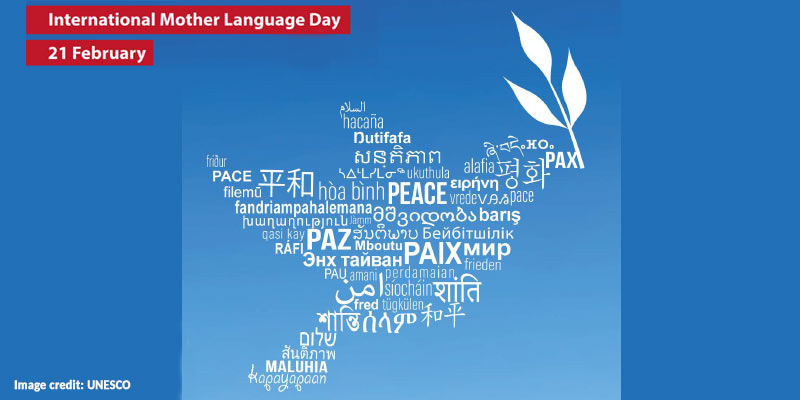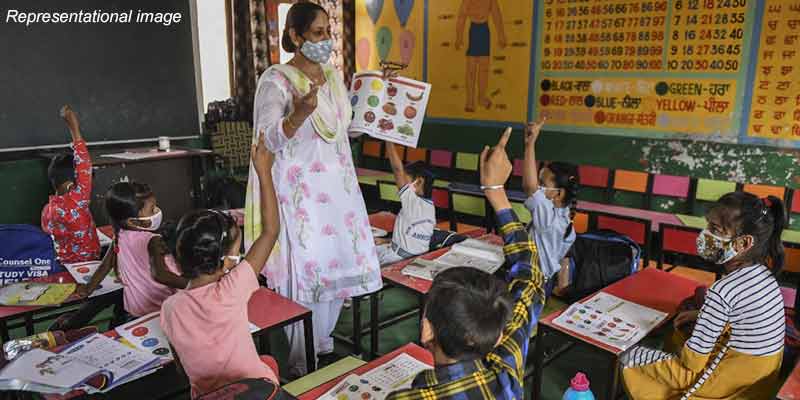- World
- Feb 21
Why mother tongue-based education is essential?
• The United Nations celebrates International Mother Language Day on February 21.
• International Mother Language Day was proclaimed by the General Conference of the United Nations Educational, Scientific and Cultural Organization (UNESCO) in November 1999. The idea to celebrate International Mother Language Day was the initiative of Bangladesh.
• The Day is an essential platform to promote the importance of cultural and linguistic diversity, and multilingualism for peaceful and sustainable societies.
• This year's theme, “Multilingual education – a necessity to transform education” aligns with recommendations made during the Transforming Education Summit, where an emphasis was also placed on Indigenous people’s education and languages.
• UNESCO leads the Indigenous Languages Decade 2022-2032, a ten-year action plan to draw the world’s attention to the critical loss of indigenous languages and the urgent need to preserve, revitalise and celebrate them.
More languages disappear at an alarming rate
• UNESCO has been leading the way and advocating for multilingual education based on the mother tongue from the earliest years of schooling. Research shows that education in the mother tongue is a key factor for inclusion and quality learning, and it also improves learning outcomes and academic performance.
• This is crucial, especially in primary school to avoid knowledge gaps and increase the speed of learning and comprehension. And most importantly, multilingual education based on the mother tongue empowers all learners to fully take part in society.
• It fosters mutual understanding and respect for one another and helps preserve the wealth of cultural and traditional heritage that is embedded in every language around the world.
• However, there is still a long way to go before guaranteeing all learners their right to education in their mother language. In most countries, the majority of students are taught in a language other than their mother tongue, which compromises their ability to learn effectively.
• There are more than 6,700 languages spoken around the world today. But linguistic diversity is increasingly threatened as more and more languages disappear at an alarming rate. And when a language disappears, it takes with it an entire cultural and intellectual heritage.
• Globally 40 per cent of the population does not have access to an education in a language they speak or understand. But progress is being made in multilingual education with growing understanding of its importance, particularly in early schooling, and more commitment to its development in public life.
Multilingual education based on mother tongue
• UNESCO encourages and promotes multilingual education based on mother tongue or first language. It is a type of education that begins in the language that the learner masters most and then gradually introduces other languages.
• This approach enables learners whose mother tongue is different from the language of instruction to bridge the gap between home and school, to discover the school environment in a familiar language, and thus, learn better.
• Multilingualism contributes to the development of inclusive societies that allow multiple cultures, worldviews and knowledge systems to coexist and cross-fertilize.
• Multilingual education based on mother-tongue facilitates access to and inclusion in learning for population groups that speak non-dominant languages, languages of minority groups and indigenous languages.
Major linguistic divide in cyberspace
• School closures due to the COVID-19 pandemic exposed and deepened pre-existing education inequalities around the world. The closures ranged from a global average of 20 weeks to above 70 in some cases, more than a full school year.
• As always, it has impacted vulnerable and marginalised learners the hardest, which includes indigenous and speakers of languages from minority groups.
• According to UN estimates, nearly 500 million students from pre-primary to upper-secondary school were unable to access any remote learning opportunities during the lockdowns.
• In many countries, distance teaching and learning tools, programmes and content were not always able to reflect linguistic diversity. They were largely provided in dominant national or international languages. When remote learning content is not available in students’ mother tongue, it increases the risk of learning loss, dropouts and exclusion.
• Many teachers also didn’t have the skills and readiness for using distance teaching. They also struggled with digital tools in languages that they didn’t always master.
• Another element that exacerbates the digital divide is the fact that many languages are not present on the Internet. There is a major linguistic divide in cyberspace today. The inclusion of languages in the digital world and the creation of inclusive learning content is vital.
• Remote learning based on the mother tongue should be incorporated into education systems in order for all learners, especially those from linguistic minorities, to access education during school closures and beyond.
Mother tongue-based education in India
• Section 29(f) of Chapter V under Right to Education Act, 2009 states that, “medium of instructions shall, as far as practicable, be in child’s mother tongue”.
• Education is in the concurrent list of the Constitution and majority of the schools are under the domain of the states/UTs.
• As envisaged in para 4.11 of National Education Policy (NEP) 2020, wherever possible, the medium of instruction until at least Grade 5, but preferably till Grade 8 and beyond, is to be the home language/mother tongue/local language/regional language. Thereafter, the home/local language shall continue to be taught as a language wherever possible.
• The NIPUN Bharat Mission of the government through its mission implementation guidelines suggests that teaching learning process and development of teaching learning material should be done in mother tongue.
• Similarly, Vidya Pravesh, a three-month play-based school preparation programme for Grade 1, and NISHTHA FLN (Foundational literacy and Numeracy) have also re-emphasised the same.
• As per Unified District Information System for Education Plus (UDISE+) 2020-21, there are 28 languages in which teaching learning is going on in grades (1-5).
• The languages are: Assamese, Bengali, Gujarati, Hindi, Kannada, Konkani, Malayalam, Manipuri, Marathi, Nepali, Odia, Punjabi, Sanskrit, Sindhi, Tamil, Telugu, Urdu, English, Bodo, Khasi, Garo, Mizo, French, Hmar, Karbi, Santhali, Bhodi, Purgi.
Manorama Yearbook app is now available on Google Play Store and iOS App Store


